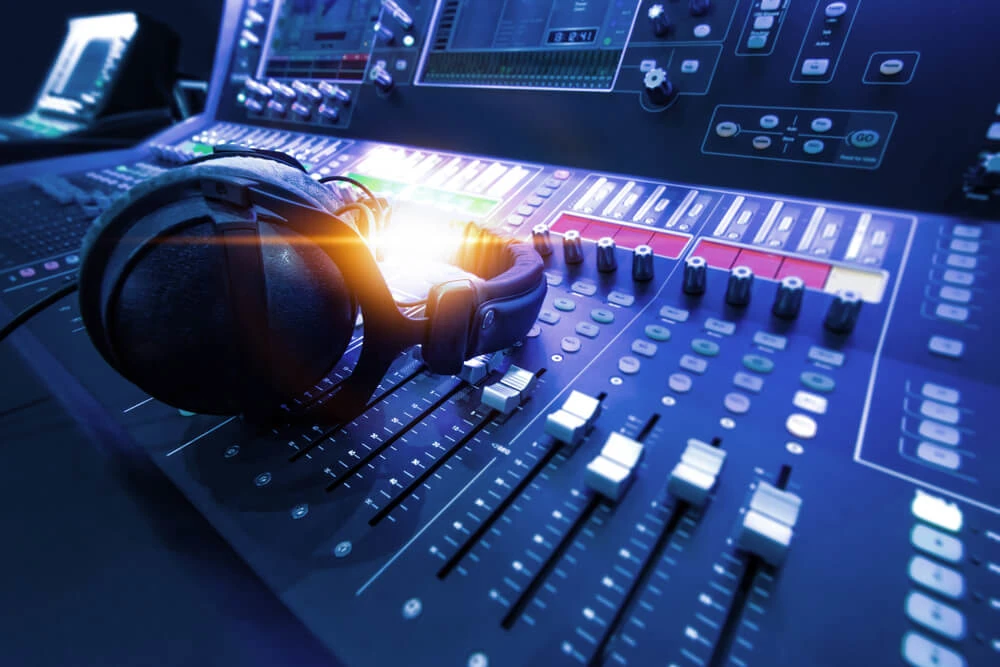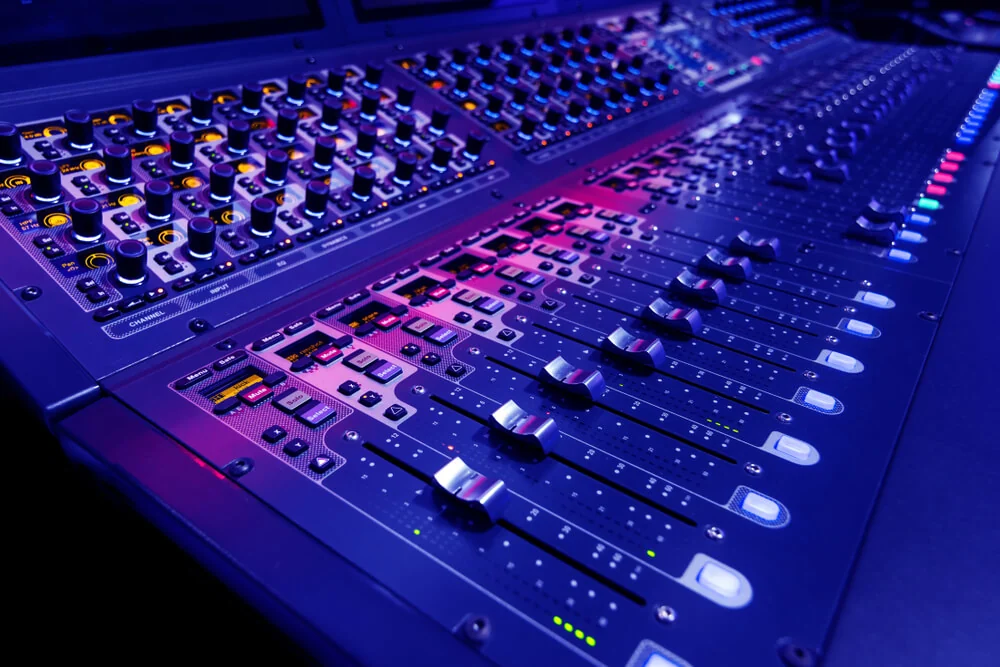Uncover the art of scripting sound effects, a skill that transforms scripts into multi-sensory experiences, enhancing atmosphere, tension, and realism in storytelling.
Key Takeaway
- Sound effects in scriptwriting elevate storytelling by creating atmosphere, tension, and realism.
- Effective sound effects require translating audio experiences into vivid text.
- Collaboration with sound designers is crucial for bringing sound cues to life.
- Sound effects can be diegetic (heard by characters) or non-diegetic (heard by the audience).
- Techniques for writing sound effects include descriptiveness, onomatopoeia, timing, contextualization, and reflecting character reactions.
- Common mistakes to avoid include overloading with sound effects, being too vague or specific, ignoring story context, neglecting silence, and inconsistent use.
What are Sound Effects in Scriptwriting?
Sound effects in scriptwriting are auditory descriptions that transform scripts into multi-sensory experiences. They create atmosphere, tension, and realism in storytelling.

Role of Sound Effects in Storytelling
Sound effects in a script can serve multiple roles. They help set the scene, provide context, and can even become a character in their own right. For instance, the relentless sound of rain in a thriller can heighten the sense of mystery and foreboding. In comedies, well-timed sound effects can enhance humor. In essence, sound effects can become an invisible but powerful cast member, contributing significantly to the story’s mood and emotional impact.
Translating Audio into Text
The challenge for scriptwriters is effectively translating an auditory experience into a written format. This translation is not just about literal description but capturing the essence and impact of the sound. For example, the sound of a door creaking open in a horror script might be described in a way that amplifies the reader’s anticipation and fear. The key is to use descriptive language that evokes the sound in the reader’s mind, making them hear it as they read.
Collaboration with Sound Designers
While scriptwriters initiate the auditory journey, sound designers bring it to fruition in production design. A well-written script with clear and imaginative sound cues can inspire sound designers to create an auditory landscape that complements the visual storytelling. This collaboration between the script and sound design is crucial in creating a cohesive and immersive viewing experience.
Types of Sound Effects in Scriptwriting
Sound effects in scriptwriting can broadly be classified into two categories: diegetic and non-diegetic sounds. Understanding these types is crucial for scriptwriters to create a realistic and engaging auditory experience.
Diegetic Sounds in SFX
Diegetic sounds are those that logically exist within the world of the story. These are sounds that the characters in the film or play would hear. Examples include footsteps, doors slamming, phones ringing, and dialogue. Diegetic sounds help in building the world of the story and can be used to reveal character traits or progress the plot. For instance, the distant sound of police sirens in a crime drama can signal impending trouble for the characters.
Non-Diegetic Sounds in SFX
Non-diegetic sounds, on the other hand, are sounds that the audience hears but the characters do not. These often include background music, voiceovers, or thematic sounds that enhance the emotional impact of a scene. For example, suspenseful music during a thriller scene heightens the audience’s anticipation, even though the characters are unaware of it. Non-diegetic sounds are powerful tools for shaping the audience’s emotional response and can provide insight into the narrative.
How to Write a SFX in a Script
To write sound effects in a script, use descriptive language, onomatopoeia when fitting, and ensure to enhance the story’s atmosphere and character reactions.
To write an SFX in a script, use uppercase for the sound (e.g., SFX: DOOR SLAMS) in the action line or add the sound effect in parentheses next to the relevant action.
Writing Techniques for SFX in Scripts
Writing sound effects in scripts is both an art and a science. The key is to convey the essence of the sound in a way that is vivid, clear, and enhances the story. Here are some techniques to effectively write sound effects in scripts:
1. Be Descriptive but Concise: The description of a sound effect should be vivid enough to evoke the intended auditory sensation but concise enough not to disrupt the flow of the script. For example, instead of just writing “doorbell rings,” you could write “a shrill, echoing doorbell slices through the silence.”
2. Use Onomatopoeia When Appropriate: Onomatopoeia, the formation of a word from a sound associated with its name (like ‘buzz’ or ‘click’), can be a powerful tool. It instantly conveys the nature of the sound. However, it should be used sparingly and only when it adds value to the scene.
3. Consider the Timing and Rhythm: The timing of a sound effect can significantly impact its effectiveness. Introduce sound effects in a way that complements the rhythm of the scene. For example, the sudden interruption of a loud crash in a quiet, tense scene can heighten drama.
4. Contextualize the Sound: Provide context for the sound effect. Is it distant or close? Is it continuous or sporadic? Context helps the reader understand the sound’s relevance and impact on the scene.
5. Reflect Character Reactions: Sometimes, the reaction of a character to a sound can be more telling than the description of the sound itself. A character’s response can provide insight into the sound’s intensity, nature, and effect within the story.
To write SFX in a script: Be descriptive yet concise, use onomatopoeia, consider timing/rhythm, contextualize the sound, and reflect character reactions.
Incorporating these techniques will help in writing sound effects that are both effective and integral to the storytelling process. The next sections will explore real-world examples and common mistakes to avoid when writing sound effects in scripts.
Common Mistakes to Avoid When Writing Sound Effects in Scripts
Writing sound effects in scripts is a nuanced craft, and there are common pitfalls that writers, especially those new to the field, should be aware of. Avoiding these mistakes can significantly enhance the quality of a script and its storytelling impact.

1. Overloading the Script with Sound Effects: One of the most common mistakes is inundating the script with too many sound effects. This can overwhelm the reader and distract from the story’s core narrative. Sound effects should be used judiciously, focusing on those that truly enhance the scene.
2. Being Too Vague or Overly Specific: Striking the right balance in the description of sound effects is key. Too vague, and the reader might not grasp the intended effect; too detailed, and it might hinder the flow of the script. The aim is to provide just enough detail to evoke the right auditory image.
3. Ignoring the Story Context: Every sound effect should serve the story. A common mistake is inserting sounds that don’t align with the scene’s context or the story’s overall tone. Ensure that each sound effect is relevant and contributes meaningfully to the narrative.
4. Forgetting the Power of Silence: Silence can be as powerful as any sound effect. Overlooking the strategic use of silence is a missed opportunity. Silence can create tension, focus attention, or provide a respite in a noisy script. It’s a tool that should be used thoughtfully to enhance the story’s emotional impact.
5. Neglecting Character Reactions: The way characters react to sound can be as important as the sound itself. Neglecting to include character reactions to significant sounds can result in a loss of immersion and emotional impact. Character reactions help to convey the sound’s effect in the story world.
6. Inconsistent Use of Sound: Consistency in the use of sound effects is crucial. Inconsistent use can confuse the reader and disrupt the narrative flow. Establish a pattern for how and when to use sound effects and stick to it throughout the script.
Avoiding these common mistakes will help scriptwriters more effectively use sound effects to enhance their storytelling. By being mindful of these pitfalls, writers can create scripts that are both engaging and audibly rich.
Closing Thoughts
Balancing creativity with purpose is key in sound effect scripting. Understanding sound types, employing effective techniques, and avoiding common mistakes can elevate scripts to resonate deeply with audiences.
About RFM
RFM is a web-based video, TV, and film production management software that offers various features for professionals in the entertainment industry. It allows users to write professional project briefs and descriptions, talent, and actor showcases, visualize scenes with shot lists, media sharing and manage various aspects of production, including call sheets, shooting schedules, and script breakdowns. RFM is designed to help teams collaborate more effectively during the production process, making it a valuable tool for filmmakers, photographers, and video production companies